UC Gardening Blogs
Jessica Gillung's Research on Spider Flies: A Tale of Conflict and Uncertainty
When UC Davis doctoral candidate Jessica Gillung, who studies the parasitoid flies commonly known...

Professor Thomas Pape of the Natural History Museum of Denmark and chair of the Council for the International Congresses of Dipterology, presents the top student prize to Jessica Gillung. The next Congress takes place in 2022 in California
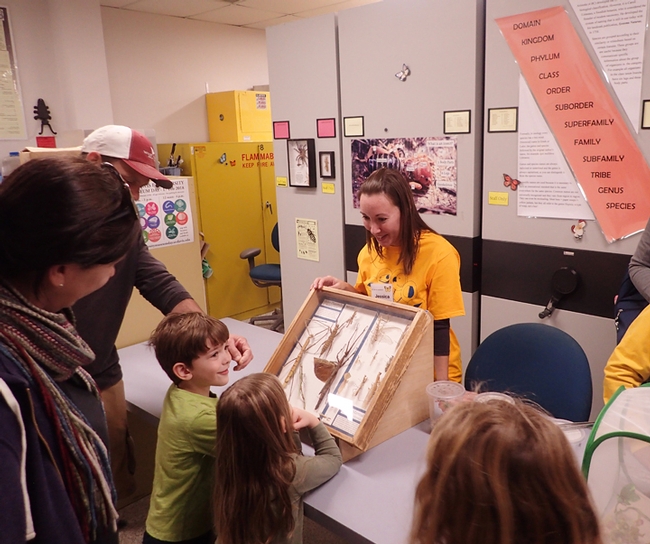
UC Davis doctoral student Jessica Gillung interacts with visitors at a Bohart Museum of Entomology open house. (Photo by Kathy Keatley Garvey)
Dragonfly Haiku
Garden dragonfly
Orange wings glisten as you land
Honoring my yard.
Traditionally a Japanese form of poetry, the Haiku is a non-rhyming set of three lines, with words counted by syllables - 5,7,5-. Haikus are often reflecting something from nature, and accompanied by delicate artwork.
A few weeks ago, while sitting on my patio. I noticed a dragonfly zipping around my garden. I enjoyed the bright flash of color and appreciated that she was feasting on juicy mosquitoes and pesky biting flies (her favorite diet) as she zoomed about. She paused to rest for a moment on top of a decorative shepherd's hook. I was fortunate to be able to snap a quick photo of her with my phone.
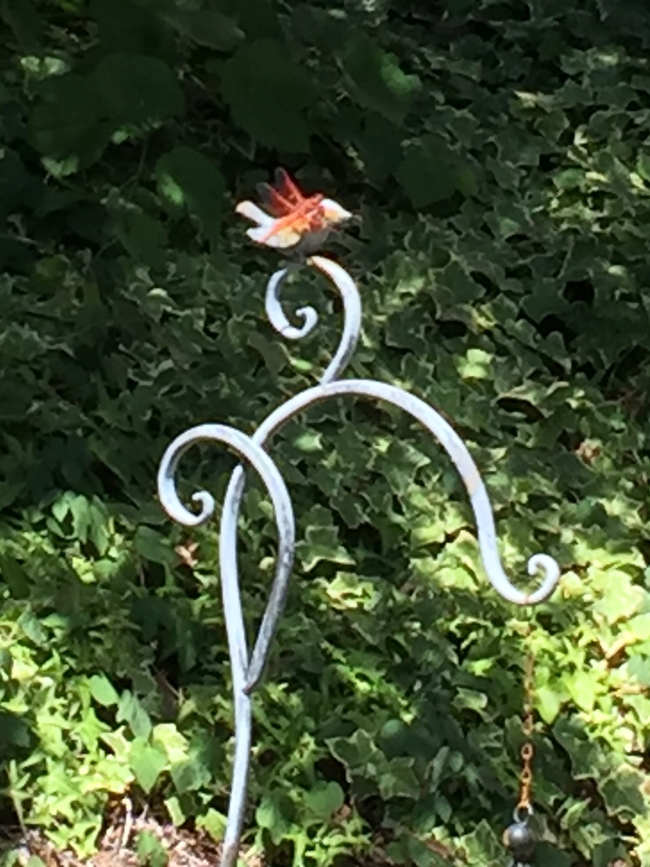
IMG 5198
A Timely Topic and None Too Soon: The Troubling State of Pollinators
What a timely topic--and none too soon! And the University of California, Davis, is a major part of...
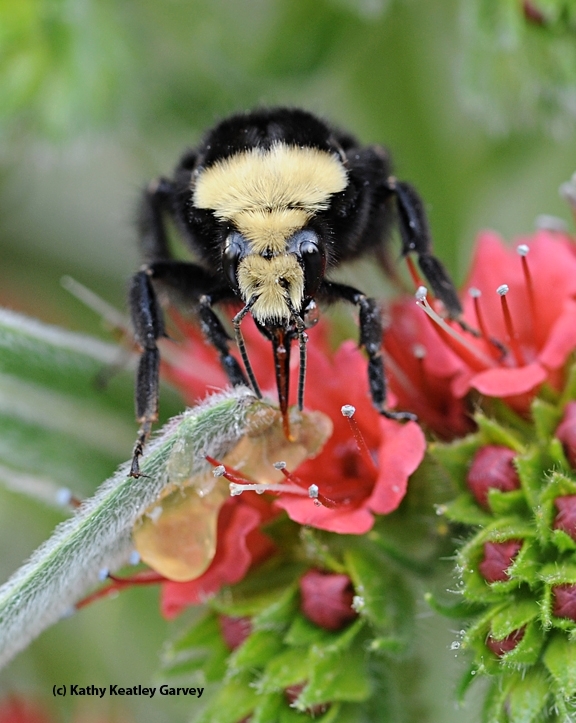
A yellow-faced bumble bee, Bombus Bombus vosnesenskii, foraging on a tower of jewels (Echium wildpretii) in Vacaville, Calif. (Photo by Kathy Keatley Garvey)
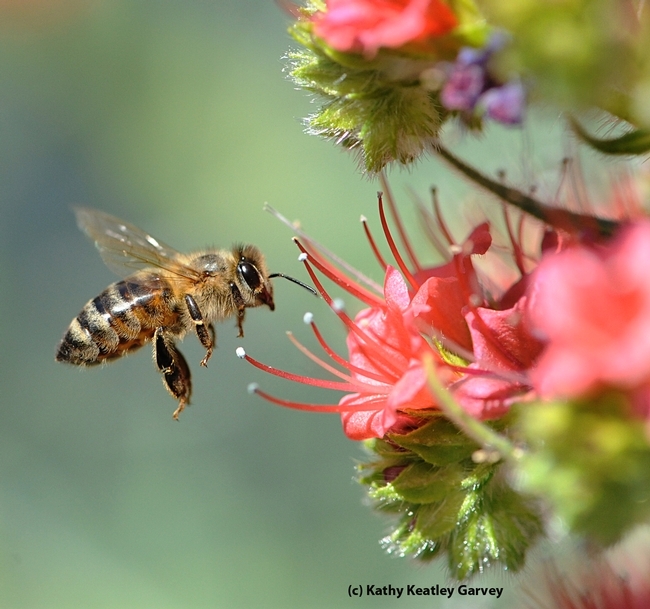
A honey bee heading toward a tower of jewels (Echium wildpretii) in Vacaville, Calif. (Photo by Kathy Keatley Garvey)
Prepare for Freezing Temperatures
As you prepare for the holidays, it's also a good time to prepare for potential frost in your yard and garden. This preparation consists of having the knowledge and materials you need to protect your sensitive plants. There are several actions you can take to protect your frost sensitive plants and trees from damage when a freeze is predicted.
- If possible, move the plants close to your home. During the day buildings absorb heat which they then radiate.
- Keep the soil around tree trunks free of ground cover, weeds, and mulch since bare soil radiates more heat.
- Keep the soil moist since moist soil retains heat better than dry soil. Ideally, you should irrigate the soil two to three days in advance of a freeze so it maintains the proper water content for maximum absorption of solar radiation. Avoid watering your plants right before a freeze because if the surface is wet, it increases evaporation and the energy loss from the evaporation counterbalances the benefit of better solar radiation absorption.
- Don't water succulents right before a freeze. Because of their ability to retain high levels of water, it increases their risk of ice crystals forming and bursting in their cells.
- Insulate the trunks of young trees by wrapping them in cardboard, fiberglass, or foam pipe insulation.
- Before the sun sets, cover sensitive plants and trees with floating row covers, nursery foam covers, burlap, or sheets or blankets. (A double layer of row cover or nursery foam cover can provide up to 10 degrees of protection.) If using burlap, a sheet or blanket, use stakes, tomato cages or other supports to keep the fabric from weighing down the foliage on the tree or plant and to allow greater air flow. Note that if the material you use as a cover gets wet, it could lead to colder temperatures near the fabric. Be sure to remove the cover during the day to recharge the heat in the soil, and to allow the greenery to absorb sunlight.
- Place old style holiday lights in the interior of trees to help raise the temperature up to 3 degrees. Be sure to use lights and power cords rated for outdoor use.
For more information on protecting sensitive plants from frost, check out the document “Frost Protection for Citrus and Other Subtropicals” from the UC Division of Agriculture and Natural Resources accessible at https://anrcatalog.ucanr.edu/pdf/8100.pdf
and the book titled Frost Protection: Fundamentals Practice and Economics, by Richard Snyder, UCD Dept. of Land, Air and Water Resources, and J. Paulo de Melo, which can be downloaded for free from the United Nations Food and Agriculture Organization website at http://www.fao.org/docrep/008/y7223e/y7223e00.htm#Contents.
The Birds and The Bees--and The Butterflies
...Birds do it, bees do it Even educated fleas do it Let's do it, let's fall in love --Cole...
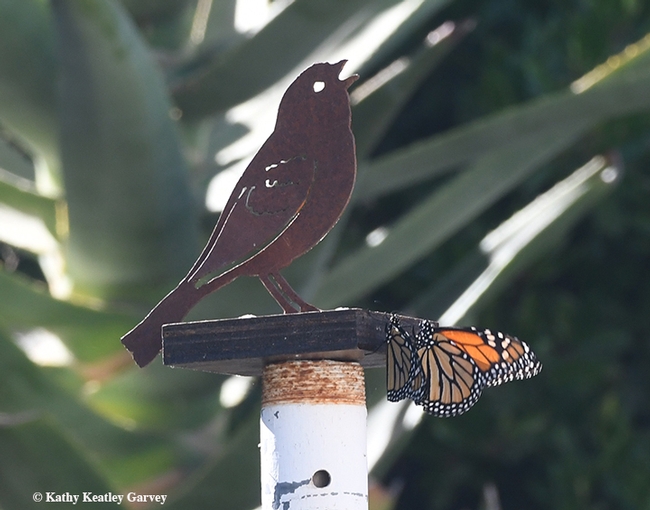
Near the presence of a metal bird sculpture, two monarchs meet Sept. 29 in Vacaville, Calif. (Photo by Kathy Keatley Garvey)
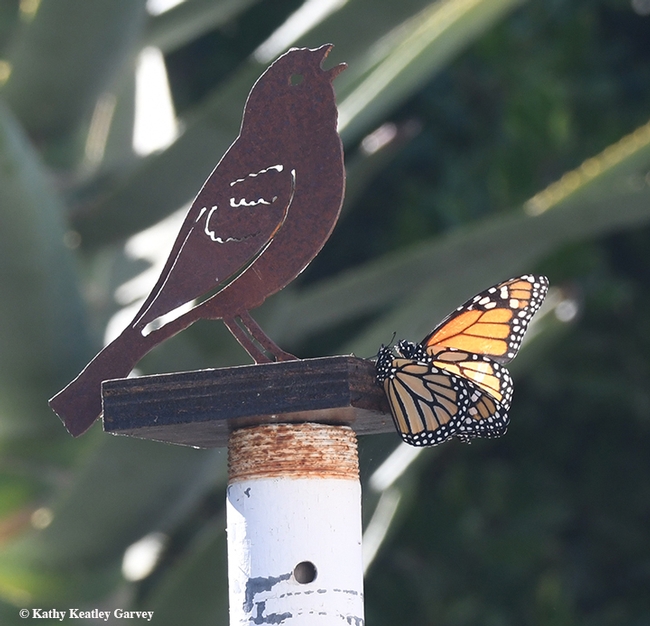
Hi, Ms. Monarch. Here I am. Look at me! (Photo by Kathy Keatley Garvey)
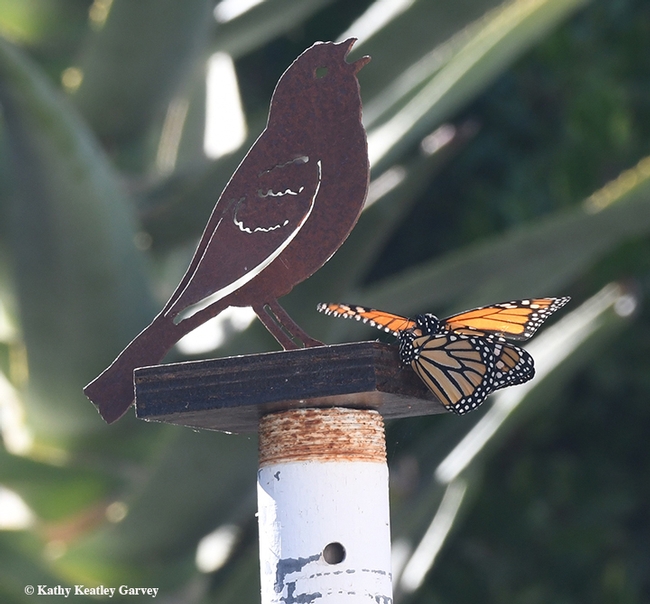
Can I get your attention? Please? (Photo by Kathy Keatley Garvey)
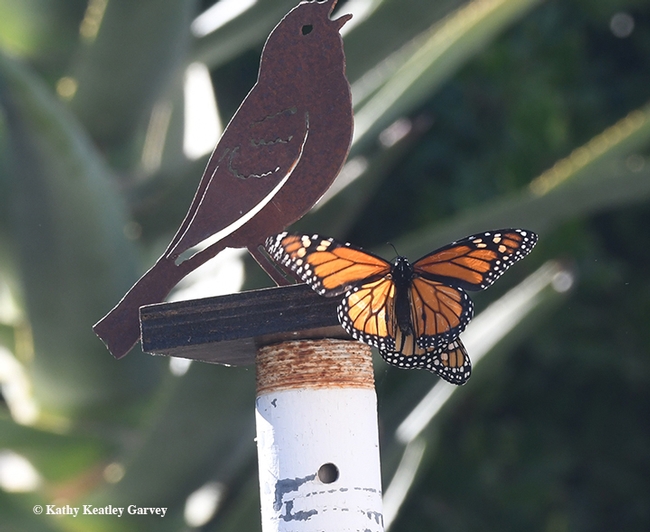
Hello, again. Here I am, over here. Over here! (Photo by Kathy Keatley Garvey)



